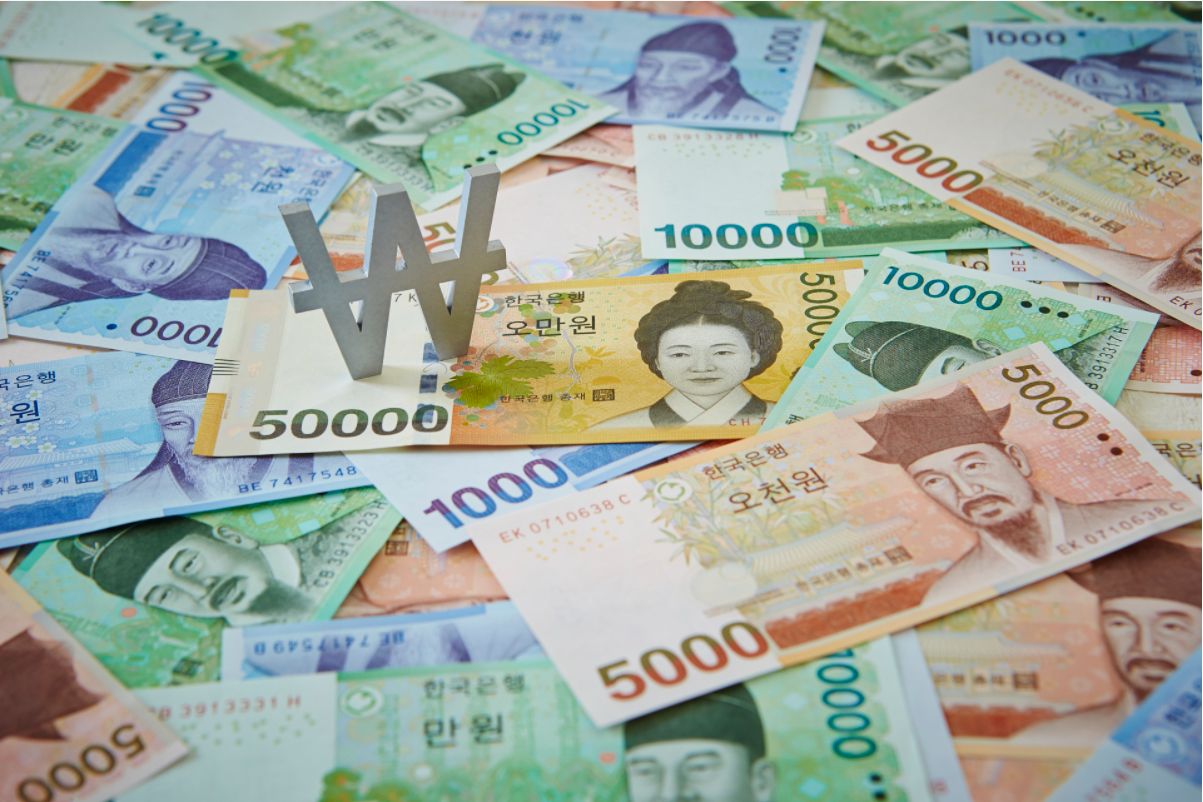
Korean Trademark Protection System
In November 1949, South Korea promulgated and formulated the Trademark Law. On March 5, 1963, with the revision of the Franchise Law and Civil Procedure Law, South Korea revised the Trademark Law. In 1979, South Korea joined the World Intellectual Property Organization (WIPO). In 2002, the Korean Intellectual Property Office (KIPO) submitted an application to WIPO to join the Trademark Law Treaty. In 2003, KIPO submitted an application to WIPO to join the Madrid Agreement. In 2016, South Korea conducted a comprehensive revision of its Trademark Law.
The exclusive right to use a Korean trademark is valid for 10 years, calculated from the date of registration approval. Apply for renewal registration within one year before the expiration date, and the validity period of each renewal registration is 10 years.
KIPO Korea Intellectual Property Office
The Korean Intellectual Property Office (KIPO) is under the Ministry of Science and Technology and is mainly responsible for the protection of intellectual property projects such as patents, utility models, designs, trademarks, semiconductor integrated circuit layout designs, trade secrets, and anti unfair competition.
website:www.kipo.go.kr
Website Phone Number:82 – 42 – 481 – 5008(Information)
Fax:82 – 42 – 472 – 3459
address:Daejeon City, South Korea(Government Complex Daejeon Building 4, 189, Cheongsa-ro, Seo-gu, Daejeon, 35208, Republic of Korea)
Email:kipoicd@korea.kr
Introduction to Korean Trademark Registration
3.1 Objects protected by Trademark Law
According to the Korean Trademark Law, trademarks protect colored or colorless markings, text, graphics, three-dimensional shapes, or their combinations used by producers, manufacturers, or operators to distinguish their goods from others in the market for the purpose of selling them. The types of trademarks include commodity trademarks, service trademarks, collective trademarks, business trademarks, etc.
3.2 According to Article 33 of the Trademark Law, the requirements for trademark registration are as follows:
The registered trademarks that can be obtained do not include the following trademarks:
- A trademark consisting solely of marks representing the common name of a commodity in a generic manner;
- Commonly used trademarks related to goods;
- A trademark consisting solely of markings that represent the place of production, quality, raw materials, effect, purpose, quantity, shape, price, production method, processing method, or usage method or time of a commodity in a general manner;
- Trademarks consisting solely of prominent place names, place name abbreviations, or maps;
- Trademarks consisting solely of marks representing a common surname or name using commonly used methods;
- Trademarks consisting solely of simple and easily accessible markings;
- Except for the trademarks specified in items 1 to 6, consumers cannot recognize the trademarks related to the goods and business indicated by the trademark.
Even if the trademark belongs to any one of the items 3 to 6 of the first paragraph, if the trademark has been recognized by consumers as indicating the source of a specific person’s goods before submitting the trademark registration application, the grant of trademark registration is limited to the goods using the trademark.
Even if the trademark belongs to item 3 (limited to the place of production) or item 4 of the first paragraph, if the trademark is a geographical indication, the registration of the trademark should be limited to the goods that use the trademark.
3.3 Acts considered as trademark infringement (Article 108 of the Trademark Law)
The following actions shall be deemed as infringement of trademark rights (excluding collective trademark rights with geographical indications) or exclusive license:
- Use a trademark that is identical to another person’s registered trademark on goods similar to the designated goods, or use a trademark that is similar to another person’s registered trademark on goods that are identical or similar to the designated goods;
- Delivery, sale, forgery, imitation, or possession of a trademark that is identical or similar to a registered trademark of another person, in order to use or cause a third party to use the trademark on goods that are identical or similar to the designated goods;
- Manufacturing, delivering, selling, or possessing equipment used for forging or imitating registered trademarks of others or causing third parties to forge or imitate such registered trademarks;
- Possessing goods that are identical or similar to designated goods registered with another person’s trademark or any other similar trademark, for the purpose of transferring or delivering such goods.
Korean Trademark Registration Procedure
4.1.Submit application
applicant
Individuals who use or intend to use a trademark within South Korea have the right to register their own trademark. Although the Korean trademark law adopts a registration system, the applicant must have the intention to actually use the trademark in Korea. If the trademark is not used continuously for 3 years or more after registration, it will be revoked.
Required materials
Trademark applicants need to submit the following materials to KIPO:
- The application must include the following information: the name and address of the applicant (if a legal entity, the name and location of the legal entity), the trademark, the name of the designated goods and the category of the trademark, the submission date, and if claiming priority, the name of the country where the first application was filed and the date of the application should be specified;
- Trademark style, 10 copies, 8CM * 8CM or smaller size;
- Priority documents, if claiming priority;
- Power of attorney, if necessary;
- Summary.
4.2.Formal review
If the submitted application falls under the following circumstances, KIPO will not assign an application number and will reject the application as if it has never been applied for:
The type of application is unclear;
Without the applicant’s name and address;
The application content is not written in Korean;
The trademark design is not attached to the application documents;
The applicant has no residence in Korea and has not appointed a Korean agent.
If the application meets the requirements, KIPO will assign an application number and conduct a formal examination in accordance with the Trademark Law. If there are any errors or omissions, the examiner will issue a correction notice requesting the applicant to make corrections within a certain period of time. If the applicant’s amendment does not meet the requirements, the trademark application will be invalidated.
4.3.Substantive examination
Initiation of review
Unlike patent and utility model applications, trademark applications are automatically examined in order of their submission dates.
Conditions for Trademark Registration
According to the Trademark Law, registering a trademark requires meeting the following requirements:
- Meet the definition of trademarks in the Trademark Law;
- As a trademark indication, it needs to have uniqueness. If it does not have uniqueness, it has already acquired a second meaning;
- Not belonging to any category of trademarks that are not allowed to be registered under the Trademark Law.
4.4.Open
If the examiner does not find any reasons for rejecting the trademark application, or if the applicant has amended any of the reasons for rejection, the trademark application shall be made public.
4.5.Objection
Interested parties can raise objections within 2 months.
4.6.Decided to authorize registration
Authorized trademark registration is an administrative measure, which means that trademark registration needs to meet certain conditions. The examiner conducts a certain examination of the trademark application, and applicants who meet the examination conditions can obtain the right to register the trademark.
4.7.Register
After obtaining trademark registration authorization, the applicant can proceed with trademark registration and obtain trademark rights by paying the registration fee within a certain period of time.
4.8.5 local courts
Starting from January 1, 2016, first instance infringement cases involving trademark infringement must be filed in five district courts in South Korea, namely the Seoul Central District Court, Daegu, Daegu, Busan, and Gwangju District Courts. Trademark infringement cases outside of Seoul can also be filed in the Seoul Central District Court.
4.9.Extension
The protection period of a trademark is 10 years from the date of registration, and renewal is required every 10 years. Trademark renewal requires submitting an application to the Korean Intellectual Property Office. Once the renewal application is formally submitted, the trademark registration shall be deemed to have been extended from the original registration validity period onwards.
4.10.Preliminary rejection notice
If the trademark application meets the conditions for rejection, the applicant may revise the reasons for rejection in writing within a certain period of time.
4.11.Correct
The applicant shall submit evidence or viewpoints to support their argument within the specified date, or submit an amendment to eliminate the condition of non registration.
4.12.Reject
The examiner finds that the application does not comply with the provisions of the Trademark Law and notifies the applicant to submit written amendments within the specified date. If the applicant’s amendments do not eliminate the factors that led to the rejection of the application, the examiner decides to reject the application.
4.13.Intellectual Property Trial and Appeal Committee
If the applicant disagrees with the decision to reject the registration, they may appeal to the Intellectual Property Trial and Appeal Committee within 30 days.
4.14.Patent court
Those who are dissatisfied with the decisions of the intellectual property trial and appeal committee may appeal to the patent court.
4.15.The Grand Court
Those who are dissatisfied with the judgment of the patent court may appeal to the Grand Court.
Introduction to Korean Trademark Office Fees

| Fee Item | Amount (Korean Won) |
| Application fee | |
| Trademark application fee for each category (electronic) | 52,000 |
| Trademark application fee for each category (paper)* *If the quantity of each designated product exceeds 10 pieces, an additional fee (electronic and paper) of 62000 will be charged for each piece | 62,000
————————————— 2,000 |
| examination fee | |
| Request priority | 18,000(electronic)
20,000(paper) |
| Request priority review | 160,000 |
| Registration fee | |
| Establishment of Rights Registration
a. One time payment -Basic cost: per category -Additional fees for each category *If the quantity of each designated product exceeds 10 pieces, an additional fee will be charged for each piece b .Payment in two installments – Basic fee for each period – Additional fees for each category *If the quantity of each designated product exceeds 10 pieces, an additional fee will be charged for each piece |
201,000 2,000
————————————— 122,000 1,000 |
| Additional registration for designated products
*If there are more than 10 designated items in each category, an additional fee of 201000 will be charged for each item |
201,000
————————————— 2,000 |
| Registration Renewal
a. One time payment – Basic cost: for each category – Additional fees for each category *If the quantity of each designated product exceeds 10 pieces, an additional fee will be charged for each piece b.Payment in two installments – Basic fee for each period – Additional fees for each category *If the quantity of each designated product exceeds 10 pieces, an additional fee will be charged for each piece |
300,000 2,000
————————————— 184,000 1,000 |
| Late renewal (application for renewal after registration expires):
a. One time payment – Basic cost: for each category – Additional fees for each category *If the quantity of each designated product exceeds 10 pieces, an additional fee will be charged for each piece b. Payment in two installments – Basic fee for each period – Additional fees for each category *If the quantity of each designated product exceeds 10 pieces, an additional fee will be charged for each piece |
330,000 2,000
————————————— 203,000 1,000 |
| other | |
| Request to split the product or specify the category of the product:
a. When splitting multiple designated trademark applications, each split application: b. Other: |
10,000 Application fee |
| Registration objection, for each category | 50,000 |
| Conversion application fee
Trademark application becomes service trademark application, in each case |
9,000(electronic application)
10,000(paper application) |
For more information, please refer to the official website of KIPO.

